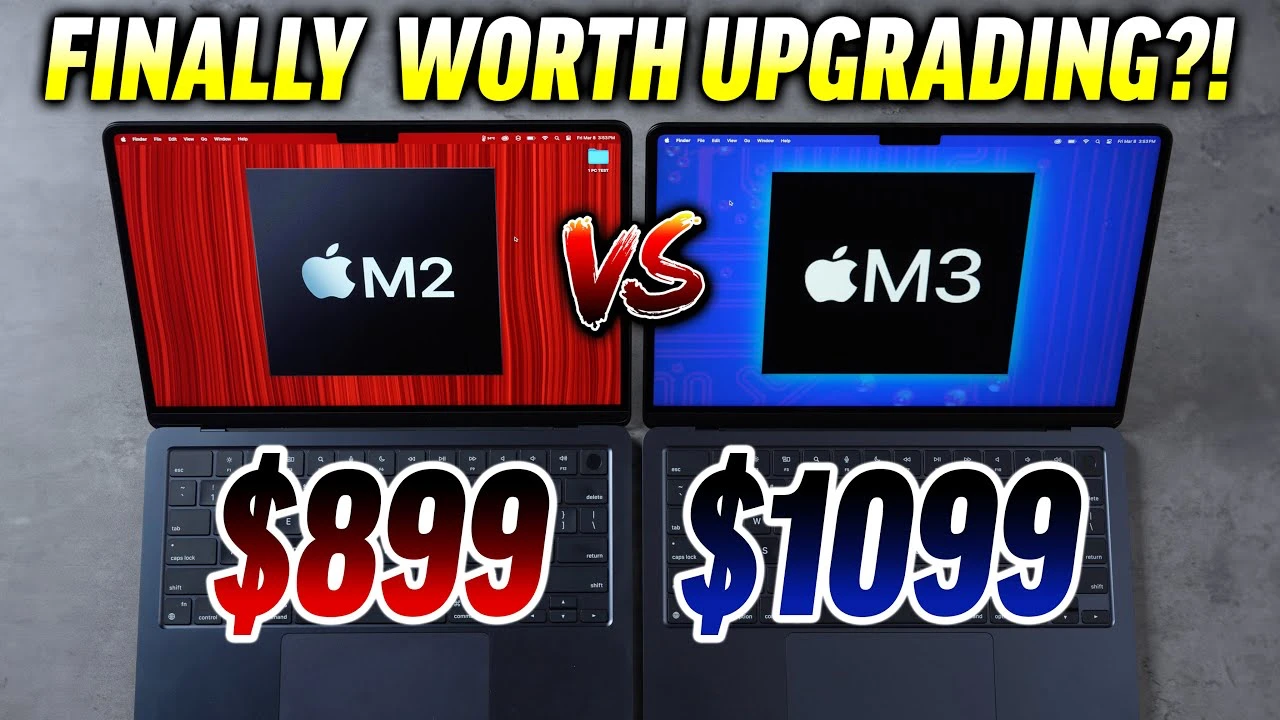Are you in the market for a new MacBook Air but find yourself tangled in the web of choices, especially between the latest M2 and M3 models? You’re not alone. Deciding between these two powerhouses can be a daunting task given their striking similarities and nuanced differences. Luckily, the video below from Max Tech gives us a good look at both models, guiding you through their features, performance, and value to help you make an informed decision.
Design and Finish
First off, Apple’s design philosophy continues to shine through both models, offering sleek, lightweight laptops that are as beautiful to look at as they are to use. However, the M3 MacBook Air introduces a subtle yet impactful update with a new coating on the midnight color option. This innovation significantly reduces fingerprint visibility, keeping your device looking pristine for longer. If keeping your device looking spotless is high on your priority list, the M3 might edge out its predecessor here.
Microphones and Connectivity
For the digital nomads, remote workers, and podcasters among us, audio quality can be a deal-breaker. The M3 MacBook Air steps up its game with an improved microphone system, ensuring your voice comes through crystal clear during calls and recordings. Moreover, it broadens your workspace possibilities by supporting two external displays in clamshell mode – a significant upgrade from the M2 model. This feature alone might sway users who rely on multiple screens for productivity.
SSD Speeds and Performance
Under the hood, the M3 MacBook Air boasts a significantly faster SSD, especially in read speeds. This enhancement is crucial for tasks that require heavy data transfer or use swap memory extensively, offering a smoother and more responsive user experience. When it comes to raw power, the M3’s 3 nanometer chip leads to noticeable improvements in both CPU and GPU benchmarks. From ray tracing to efficiency cores, the M3 model shines, making it an attractive option for professionals in video editing, photo processing, and other demanding applications.
Thermal Throttling and Battery Life
Despite its fanless design, the M3 MacBook Air manages heat more effectively than its predecessor, minimizing thermal throttling and maintaining performance under load. This efficiency also translates to better battery life, potentially offering an extra 1-2 hours of use compared to the M2 model. For those who value mobility and long work sessions away from power outlets, the M3 MacBook Air presents a compelling case.
Which One is Best for You?
While the M3 MacBook Air does come with a higher price tag, its advancements in performance, battery life, and additional features such as improved connectivity and audio quality may justify the investment for many users. However, it’s important to consider that the M2 MacBook Air remains a formidable option, especially for those who can find it at a discount. Its robust performance and feature set still cater to a wide range of needs, making it a value-packed choice for users with less intensive requirements or tighter budgets.
Choosing between the M2 and M3 MacBook Air ultimately boils down to your specific needs, workflow, and budget. If the improvements in the M3 model align with your priorities and the price difference is manageable, it’s an excellent choice that future-proofs your investment. Conversely, the M2 MacBook Air continues to stand as a powerful, reliable option that won’t disappoint, especially if you’re looking to save some money without compromising on quality.
Navigating the choice between these two MacBook Air models can seem overwhelming, but armed with the right information, you can make a decision that best suits your personal and professional needs. Whether you prioritize design, performance, or value, there’s a MacBook Air that’s perfect for you.
Source & Image Credit: Max Tech
Filed Under: Apple, Laptops
Latest TechMehow Deals
Disclosure: Some of our articles include affiliate links. If you buy something through one of these links, TechMehow may earn an affiliate commission. Learn about our Disclosure Policy.
